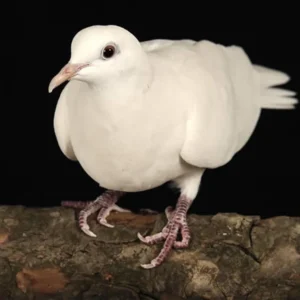Description
Doves are a group of birds in the Columbidae family.
Doves have relatively small heads in comparison to their bodies and small, narrow bills. They have short legs and walk as if their feet are tender which causes their heads to bob back and forth. These birds have fairly long tails with distinct color patterns that are useful in identifying the various species. A half dozen species of doves are common to North America; there are 35 recognized colors of the Ringneck Dove alone. Most common colors are shades of gray, white, brown and peach. Doves are known for their powerful, precise flight patterns and the whirling sound created by their wings; mourning doves can reach speeds up to 55 miles per hour.
Doves have the uncanny ability to drink water without raising their head. They feed primarily on grass and grain seeds, with the common ground dove taking in over 2,500 seeds per day to meet its high caloric demands. Doves forage for seed by walking and pecking at the ground, but most won’t move leaves or litter to find seeds. Some species also eat fruits, and white-winged doves even eat snails for calcium and small pebbles to grind plant material in their gizzards. Doves live in open woodlands, urban areas and some species take up residence in dense forests. They are regularly seen perched on power lines and in tree branches.
Doves are often used as a symbol of peace.
White Doves are small birds, about 12″ from head to tail. They will live an average of 10 – 15 years, though some may live over 25 years.













